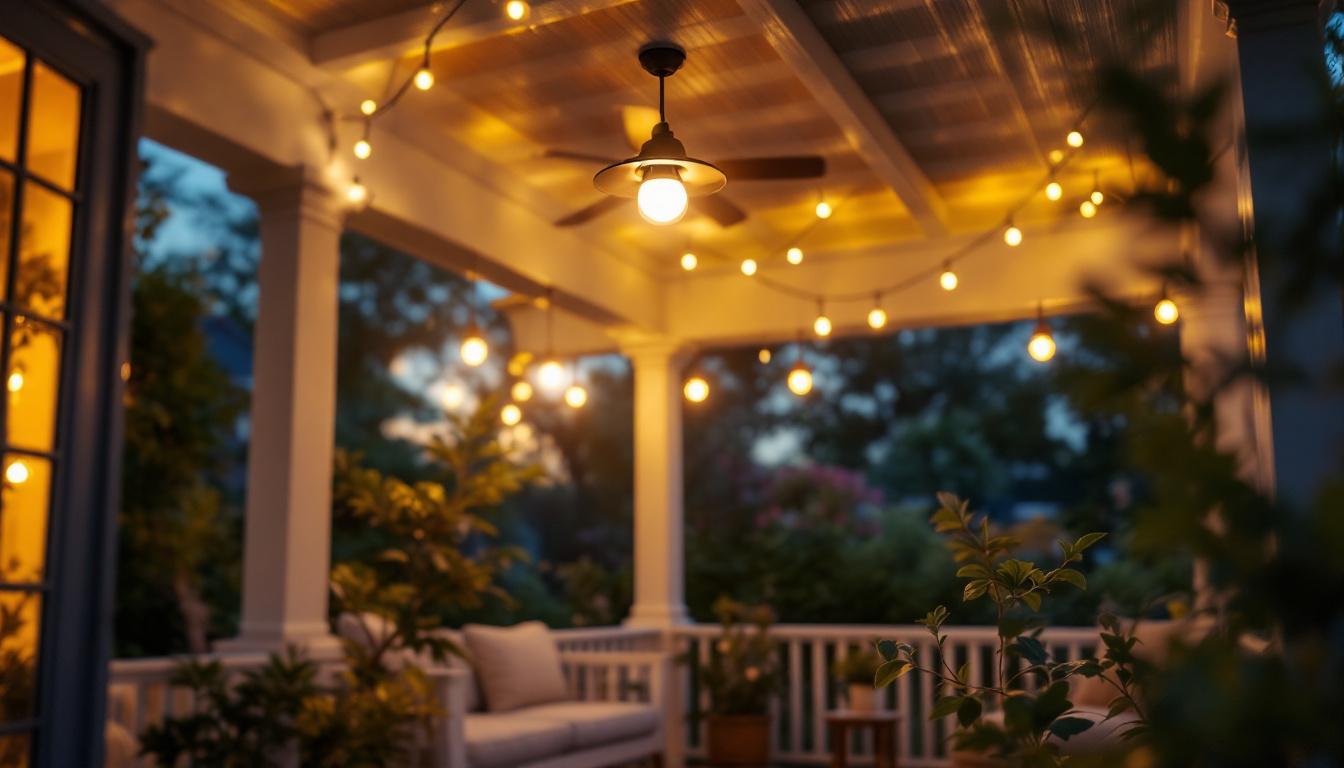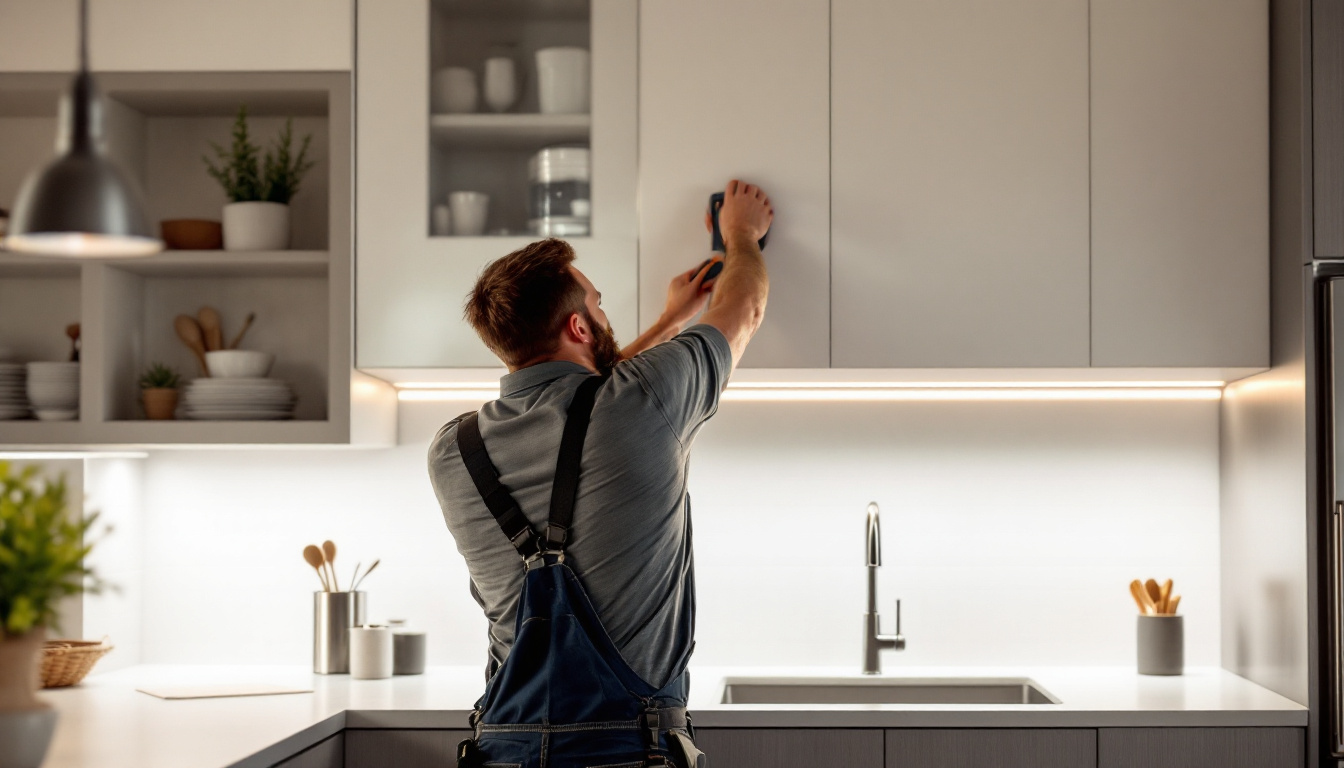
Ceiling stairway lighting plays a critical role in both the functionality and aesthetics of staircases in residential and commercial spaces. For lighting contractors, understanding the latest trends and technologies in this niche is essential to deliver solutions that balance safety, style, and energy efficiency. Stairways often serve as transitional spaces that require careful illumination to prevent accidents while enhancing the architectural character of a building.
With evolving design preferences and advances in lighting technology, ceiling stairway lighting has moved beyond simple overhead fixtures to incorporate innovative approaches that improve ambiance, visibility, and energy consumption. This article explores the most relevant trends lighting contractors should be aware of to stay competitive and meet client expectations.
One of the most significant trends in ceiling stairway lighting is the integration of smart lighting systems. These systems allow for customizable lighting scenarios that can be adjusted based on time of day or occupancy, enhancing both safety and energy efficiency. For instance, motion sensors can automatically turn on lights as someone approaches the stairs, providing illumination only when needed. Additionally, smart lighting can be controlled via mobile apps, giving homeowners the ability to set the mood or adjust brightness levels from anywhere in the house. This level of control not only promotes convenience but also contributes to energy savings, as lights can be programmed to turn off when no one is around.
Another noteworthy development is the use of LED technology, which has revolutionized ceiling stairway lighting. LEDs are not only more energy-efficient than traditional incandescent bulbs, but they also have a longer lifespan, reducing the frequency of replacements and maintenance. Furthermore, the versatility of LED fixtures allows for creative designs, such as recessed lighting or integrated lighting within handrails, which can create a visually stunning effect while ensuring safety. The ability to choose from a wide range of color temperatures also enables homeowners to create the desired atmosphere, whether it’s a warm, inviting glow or a bright, energizing light. As sustainability becomes increasingly important, the shift towards LED lighting solutions represents a significant step towards eco-friendly design in stairway illumination.
Safety remains the foremost priority in stairway lighting. Proper illumination reduces the risk of trips and falls, which are among the most common household and workplace accidents. Lighting contractors must be well-versed in local building codes and regulations that dictate minimum light levels, fixture placement, and emergency lighting requirements for stairways.
For example, the Illuminating Engineering Society (IES) recommends a minimum of 100 lux on stair treads to ensure visibility without glare. Additionally, emergency lighting systems with battery backup are often mandated in commercial settings to maintain illumination during power outages. Ensuring compliance not only protects occupants but also shields contractors from liability. Furthermore, integrating motion sensors can enhance safety by automatically activating lights when someone approaches the stairs, ensuring that the area is always well-lit when in use. This technology not only improves safety but can also lead to energy savings, as lights will only be on when needed.
Even distribution of light across the stairway is crucial. Ceiling-mounted fixtures should be positioned to eliminate shadows on steps, which can obscure depth perception and create hazards. Lighting contractors should consider the height of ceilings, stair width, and the presence of landings when planning fixture placement.
Layering light sources by combining ceiling fixtures with wall sconces or recessed step lights can enhance depth perception and add visual interest. However, ceiling stairway lighting remains the primary source, so choosing the right type and positioning of fixtures is fundamental. In addition to traditional fixtures, the use of LED strip lighting along the edges of stairs can provide a modern touch while enhancing safety by clearly marking the stair boundaries. This not only helps in guiding individuals safely up and down the stairs but also contributes to the overall aesthetic of the space, allowing for creative design possibilities that can complement the surrounding decor.
The widespread adoption of LED lighting has revolutionized ceiling stairway illumination. LEDs offer superior energy efficiency, longer lifespan, and greater design flexibility compared to traditional incandescent or fluorescent bulbs. For lighting contractors, recommending LED solutions can significantly reduce maintenance costs and energy consumption for clients.
Modern LED fixtures come in a variety of shapes and sizes, including slim profiles that integrate seamlessly into ceilings. Adjustable color temperatures—from warm white to cool daylight—allow customization to suit different architectural styles and user preferences. Additionally, dimmable LED systems enable dynamic control of light levels, enhancing both ambiance and functionality. The ability to fine-tune brightness and color temperature not only caters to aesthetic preferences but also supports various activities, from casual gatherings to focused work sessions, making stairway lighting more versatile than ever.
Smart technology integration is transforming how ceiling stairway lighting is managed. Motion sensors, daylight sensors, and programmable timers allow lights to operate only when needed, improving energy efficiency and convenience. For instance, motion-activated ceiling lights can automatically illuminate stairways when someone approaches, then dim or switch off after a preset period. This not only saves energy but also enhances safety, as well-lit stairways can prevent accidents and provide peace of mind for homeowners.
Lighting contractors should be familiar with popular smart lighting protocols such as Zigbee, Z-Wave, and Wi-Fi to offer clients systems that integrate with home automation platforms. Voice control compatibility with assistants like Alexa and Google Assistant is increasingly sought after, providing hands-free operation and enhancing user experience. Furthermore, the ability to set schedules or remotely control lighting through smartphone apps adds an extra layer of convenience, allowing homeowners to manage their lighting even when they are away from home.
Contemporary interior design trends favor minimalist aesthetics, and ceiling stairway lighting reflects this preference. Sleek, low-profile fixtures that blend into ceilings or create subtle recessed lighting effects are highly popular. These designs emphasize clean lines and unobtrusive presence, complementing modern staircases constructed from materials like glass, steel, and concrete. The choice of fixtures can significantly influence the overall feel of a space, making it essential for contractors to stay updated on the latest design trends to meet client expectations.
Architectural lighting techniques, such as cove lighting and indirect illumination, are also gaining traction. By hiding LED strips behind ceiling coves or recesses, contractors can create a soft, diffuse glow that accentuates stairway contours without direct glare. This approach enhances spatial perception and adds a sophisticated ambiance. Additionally, integrating color-changing LEDs into these designs allows for dynamic lighting scenes that can be adjusted based on the time of day or specific events, further enhancing the stairway’s visual appeal while providing functional illumination.
While ceiling lighting is essential, integrating it with step-level lighting creates a comprehensive illumination strategy. Lighting contractors are increasingly specifying systems where ceiling fixtures work in tandem with LED step lights embedded into stair risers or sidewalls. This layered approach improves safety by clearly defining each step and adds a dramatic visual effect.
Some manufacturers now offer modular systems that synchronize ceiling and step lighting controls, allowing for coordinated dimming and color changes. This integration is particularly effective in hospitality and commercial environments where ambiance and safety must coexist.
Human-centric lighting, which aligns artificial light with natural circadian rhythms, is an emerging trend in stairway illumination. By adjusting color temperature and intensity throughout the day, ceiling stairway lighting can support occupant well-being and alertness. For example, cooler, blue-enriched light in the morning can promote wakefulness, while warmer tones in the evening create a relaxing atmosphere.
Lighting contractors should consider HCL-compatible fixtures and control systems when designing stairway lighting for healthcare facilities, offices, and residential projects focused on wellness. This approach is gaining recognition for its potential to improve mood, productivity, and sleep quality.
When selecting ceiling fixtures for stairways, contractors should prioritize quality, durability, and ease of installation. Fixtures rated for damp or wet locations may be necessary in stairwells exposed to humidity or outdoor elements. Additionally, choosing fixtures with good color rendering index (CRI) values—typically 80 or above—ensures colors appear natural and vibrant.
Contractors should also consider maintenance accessibility. Ceiling stairway lights installed in high or confined spaces should have features that facilitate bulb replacement or cleaning without extensive effort or equipment.
Each stairway environment presents unique challenges and opportunities. Residential staircases often prioritize warmth and style, while commercial and industrial settings emphasize durability and compliance. Lighting contractors should tailor their solutions accordingly, balancing aesthetics with functionality.
For example, in luxury residential projects, integrating dimmable LED ceiling fixtures with decorative elements can create a welcoming atmosphere. In contrast, commercial stairways may benefit from robust, vandal-resistant fixtures with integrated emergency lighting and smart controls.
Successful ceiling stairway lighting projects often require close collaboration with architects, interior designers, and builders. Early involvement in the design process allows lighting contractors to influence fixture selection, wiring plans, and control strategies that optimize both performance and visual impact.
Contractors should communicate clearly about the technical requirements and limitations of lighting products, ensuring that aesthetic goals align with practical installation considerations. This teamwork helps avoid costly changes during construction and results in cohesive, high-quality lighting installations.
Ceiling stairway lighting is a specialized field that demands a thorough understanding of safety standards, design trends, and technological advancements. For lighting contractors, staying informed about emerging solutions such as LED innovations, smart controls, and human-centric lighting can differentiate their services and enhance client satisfaction.
By combining functional illumination with aesthetic appeal, contractors can transform stairways into safe, inviting, and visually striking spaces. Embracing minimalist designs, integrated lighting systems, and energy-efficient technologies ensures that stairway lighting installations meet the evolving needs of modern architecture and occupant expectations.
Ready to elevate your ceiling stairway lighting projects with the latest trends and technologies? Look no further than LumenWholesale, where we provide lighting contractors with high-quality, spec-grade lighting products at unparalleled wholesale prices. Our commitment to cutting out the middleman means you get access to superior lighting solutions without the burden of inflated markups. With our vast selection that adheres to the highest industry standards, you can ensure your installations are not only safe and stylish but also incredibly energy-efficient. Plus, with the convenience of free shipping on bulk orders, LumenWholesale is your go-to source for premium lighting that promises quality, affordability, and hassle-free service. Take advantage of the best value in wholesale lighting by visiting LumenWholesale today.

Discover the latest trends in garden LED lighting that every contractor should be aware of.

Discover the essential insights lighting contractors need for outdoor ceiling porch lights.

Discover essential insights and expert tips in “Lighting Solution: What Every Lighting Contractor Should Know.” This article delves into innovative techniques, industry standards, and the latest technologies that every lighting professional needs to excel in their craft.

Discover how strip under counter lighting can revolutionize efficiency for lighting contractors.